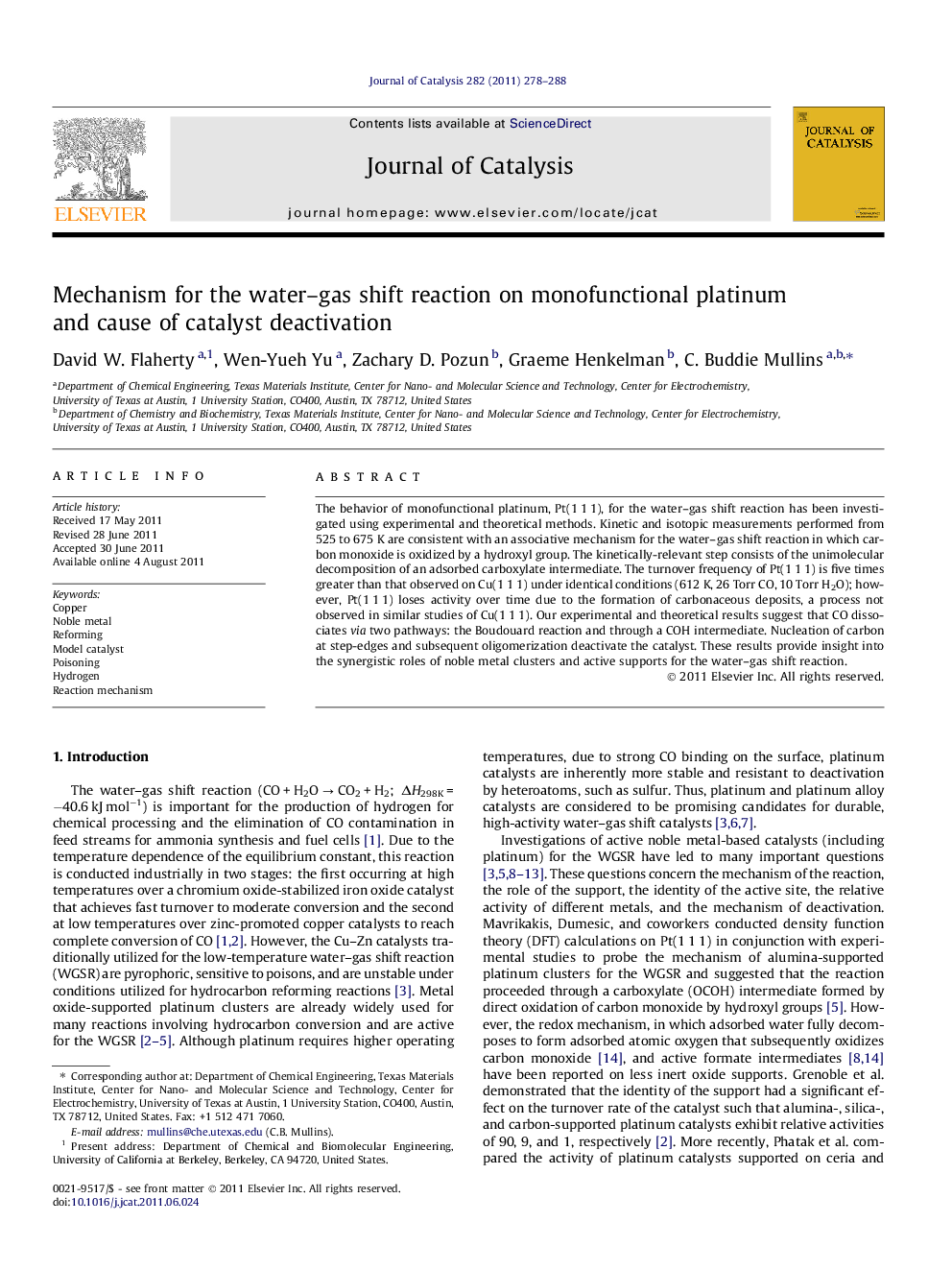| Article ID | Journal | Published Year | Pages | File Type |
|---|---|---|---|---|
| 61644 | Journal of Catalysis | 2011 | 11 Pages |
The behavior of monofunctional platinum, Pt(1 1 1), for the water–gas shift reaction has been investigated using experimental and theoretical methods. Kinetic and isotopic measurements performed from 525 to 675 K are consistent with an associative mechanism for the water–gas shift reaction in which carbon monoxide is oxidized by a hydroxyl group. The kinetically-relevant step consists of the unimolecular decomposition of an adsorbed carboxylate intermediate. The turnover frequency of Pt(1 1 1) is five times greater than that observed on Cu(1 1 1) under identical conditions (612 K, 26 Torr CO, 10 Torr H2O); however, Pt(1 1 1) loses activity over time due to the formation of carbonaceous deposits, a process not observed in similar studies of Cu(1 1 1). Our experimental and theoretical results suggest that CO dissociates via two pathways: the Boudouard reaction and through a COH intermediate. Nucleation of carbon at step-edges and subsequent oligomerization deactivate the catalyst. These results provide insight into the synergistic roles of noble metal clusters and active supports for the water–gas shift reaction.
Graphical abstractKinetic and isotopic measurements suggest that the water-gas shift reaction proceeds by an associative mechanism on Pt(1 1 1). The kinetically relevant step consists of unimolecular decomposition of adsorbed carboxylate intermediates. The surface loses activity over time due to the formation of carbonaceous deposits which nucleate at step-edges and subsequently oligomerize.Figure optionsDownload full-size imageDownload high-quality image (92 K)Download as PowerPoint slideHighlights► Monofunctional Pt(1 1 1) as water–gas shift catalyst. ► Data are consistent with associative mechanism. ► Unimolecular decomposition of carboxylate intermediate kinetically-relevant step. ► Activity loss due to carbonaceous deposits.
